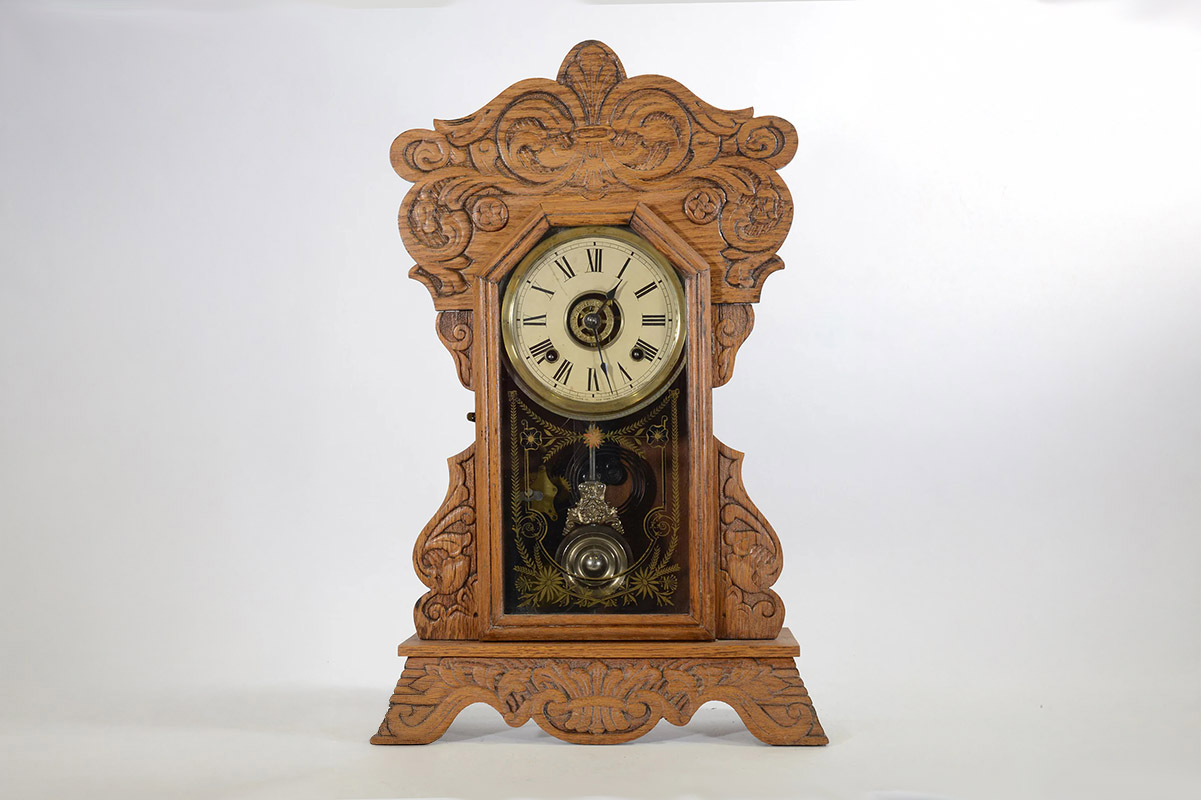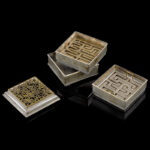This post is also available in: Italian
In the United States, the land of opportunity, where anyone could aspire to anything, large-scale clock production began in the mid-19th century with the aim of putting a clock in every home. The days when private mechanical timepieces were the exclusive domain of the wealthy and powerful were gone; no home, however modest, was without its own gingerbread clock. The curious name is linked to their appearance.
Why Gingerbread?
When viewed from the front, the distinctive, decorated wooden front of one of these clocks features a flat frame with bas-relief carvings. The shapes and patterns are simple and reminiscent of gingerbread biscuits, a traditional Christmas treat that is particularly popular in Northern Europe and the United States.
People who see these clocks for the first time immediately make the association with biscuits, so it is only natural to identify them with gingerbread. They are charming in their simplicity and have no religious or political references in their decoration. They were truly clocks for everyone. As well as being known as gingerbread clocks, they are often called Kitchen Clocks, reflecting their modest status and place in ordinary people’s homes.
The structure
In gingerbread clocks, the wooden box that houses the movement and pendulum is always very simply crafted and decidedly rustic. The back opens to provide access to the movement. The front is characterised by a decorative frame that supports the case at the bottom.
Often embossed with a design created by softening the wood with hot steam and pressing it into special moulds, the case appears small when viewed in profile. Various types of wood are used, typically oak or beech. The dial is simple, featuring 12-hour markings, and is almost always white or ivory. In cheaper models, it is made of paper or cardboard.
The front glass door features characteristic decorations that have been engraved from the back. These can be divided into two types: acid-etched decorations, which mattify the glass’s shiny surface to create a monochrome white effect; and gold-painted decorations. The decorations sometimes partially conceal the pendulum.
The clockwork
Movements can be time-only or time-and-chime. If the latter, the chimes are produced by gongs, which are circular sound springs struck by hammers. Winding is usually done using a key from the dial and lasts for 8 days. A spring provides the energy required for operation. The components are simple and made of cold-cut brass. They are industrially processed according to a product engineering design aimed at two specific goals: reducing production costs and ensuring the durability of the finished product.
The structure and construction of Gingerbread Clock movements are clearly of Germanic origin, and the use of gongs is reminiscent of Viennese Biedermeier clocks and their Austro-Hungarian variants. In some ways, they represent an evolution in simplicity, reducing costs and ensuring very low sales prices, rather than in terms of quality or precision.
Gingerbread clocks: a heartfelt theme
In the 19th century, the world of mechanical watchmaking underwent a radical transformation. While high-end and luxury manufacturers continued to exist and thrive, the concept of an affordable, mass-produced watch emerged. For the first time, reasonably accurate and robust timepieces became available at an affordable price. Roskopf watches were minimalist, essential and ridiculously cheap. For the first time, anyone could own a watch. Similarly, gingerbread clocks were to become a staple of every family home across America.
These clocks were produced in countless variations in size, as well as in terms of the decoration of the wooden frame and front glass. Higher-quality versions were produced for the middle-class market, featuring finer wood and more refined glass in the cases. Large or small, these clocks are easily identifiable and can still be found today at minor auctions, in small antique shops, and in online sales.
The manufacturers
For reasons that would take too long to list here, the number of low-cost clock manufacturers increased significantly in the United States, especially in Connecticut, from 1850 onwards. These clockmakers used mass production techniques to simplify processes and eliminate unnecessary costs, manufacturing millions of clocks a year. Thanks to these companies, Connecticut became known as ‘The American Switzerland‘.
Many companies tried their luck in the sector. Over time, some proved stronger than others, conquering most of the market in the process. In accordance with a well-known law of economics, the most successful manufacturers absorbed the smaller ones. These large groups produced not only gingerbread clocks, but clocks in general. The best companies also offered higher-quality clocks at a higher price, of course. Among the best-known brands, we can mention: Ingraham, Ansonia, Seth Thomas, New Haven and Waterbury.
Gingerbread clocks were often signed on the dial. Paper labels bearing the manufacturer’s name and contact details, as well as the model and occasionally the year, were often affixed to the back of the case. Some manufacturers also attached a printed sheet containing brief instructions and advice on proper maintenance.
From kitchen walls to collectors’ rooms
Gingerbread clocks were produced in large numbers between 1880 and 1910. Then, in 1920, demand for them declined and the craze died out within a few years, partly due to changing market trends following the First World War.
Gingerbread clocks are commonplace in the United States and Canada, but less so in Europe, where they are rarely found on the market. Due to their modest appearance, they are often not considered worthy of restoration or even cleaning and maintenance. However, it is important to note that this common name covers different grades of construction, and the higher-quality models deserve attention.
Although many were destroyed in the last century, production was so extensive that they are still easy to find in the United States. If they require maintenance, the cost is negligible. Sometimes, especially on online marketplaces, you can find pieces where the original mechanics have been replaced by quartz movements. If you are considering purchasing one, ask for specific photos of the movement to avoid any unpleasant surprises.





